In this blog post, we’ll explore a selection of captivating autumn flowers that thrive in cooler temperatures, providing not only a feast for the eyes but also opportunities to create a cozy fall oasis.
Pansy: The Resilient Beauty of Autumn
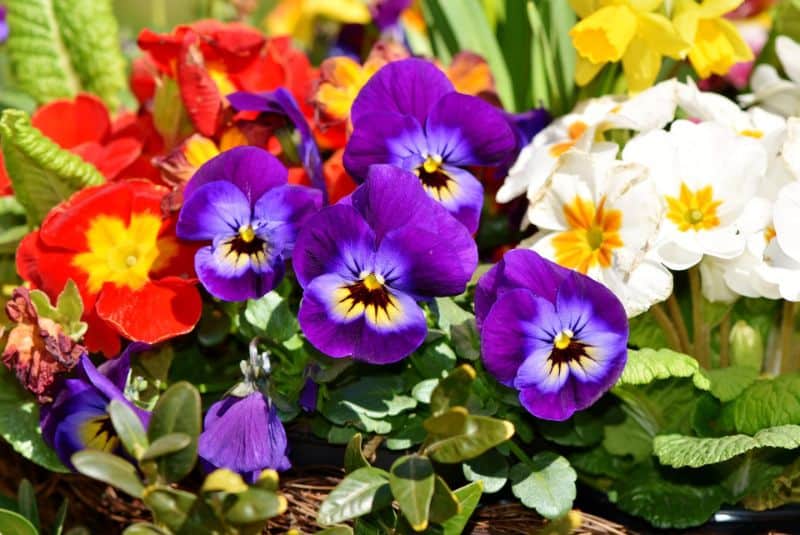
Pansies, with their vibrant colors and charming faces, are a quintessential choice for autumn balcony gardens. While commonly associated with spring, their hardiness makes them an ideal candidate for cooler weather. Pansies thrive in temperatures as low as 28°F (-2°C), allowing them to withstand early frosts and still deliver stunning blooms from late summer into late fall.
One of the most appealing aspects of pansies is their impressive color palette. Available in nearly every shade imaginable—from deep purples and bright yellows to bi-color varieties—their visual impact can dramatically enhance your balcony during the fall months. Additionally, pansies have a unique ability to adapt to varying light conditions, flourishing in both full sun and partial shade.
For balcony gardening, choose a mix of pansy varieties to create a dynamic display. Planting them in containers or window boxes elevates their aesthetic appeal and makes them accessible for maintenance. Incorporate a bit of mulch to retain moisture and protect the roots from the chilling autumn air. If you are looking to extend their bloom cycle, remember to deadhead regularly, which encourages new growth and a fresh splash of color.
Dahlia: Big Blooms for a Bold Impact
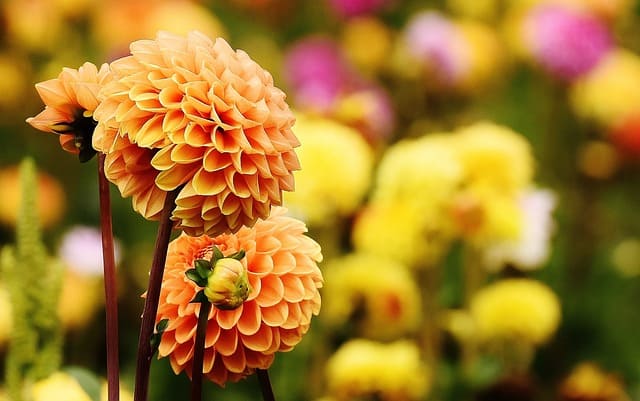
Dahlias introduce a robust flair to autumn balcony gardens, showcasing enormous blooms that are both striking and diverse in form. Ranging from the small pom-pom varieties to massive dinner-plate dahlias, these flowers can elevate your balcony’s ambiance with their theatrical presence. Known for their long-lasting blooms, dahlias provide a vibrant display well into the heart of autumn.
Selecting the right dahlia varieties for container gardening is crucial. Compact varieties such as ‘Ball’ dahlias or shorter ‘Cactus’ forms are excellent choices for small spaces. Ensure you use well-draining soil, as dahlias prefer slightly acidic conditions. Regular watering—while avoiding waterlogging—is vital to keep them flourishing and producing blooms.
What adds to the allure of dahlias is their versatility; they come in nearly every color, allowing for limitless combinations. Pairing them with trailing plants like ivy or sweet alyssum can create a striking contrast, making them even more visually appealing. Their excellent use as cut flowers also means you can bring a bit of your balcony’s beauty indoors, extending the enjoyment of autumn’s vibrant hues.
Sweet Alyssum: The Delicate Fragrance of Fall
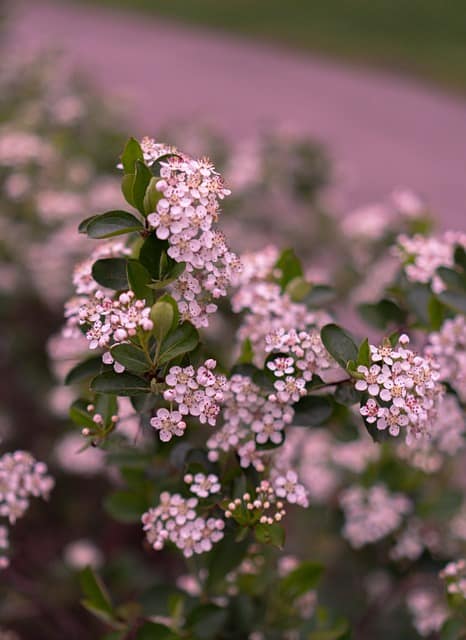
Sweet alyssum, while small in stature, packs a significant punch with its delightful fragrance and delicate clusters of flowers. Blooming with tiny blossoms that often appear in white, lavender, or pink, sweet alyssum can fill your balcony with a sweet, heady perfume during the crisp autumn months. This hardy annual can withstand cooler temperatures, and when planted in sunny areas, it often continues to flower even after frost, providing lasting beauty.
Utilizing sweet alyssum as a ground cover in container gardening helps to create a lush, layered effect. Their spreading nature makes them great companions for taller plants like dahlias or pansies. As they cascade over the edges of pots, they not only soften the overall look but enhance the striking colors of other, more substantial blooms.
Sweet alyssum is also a fantastic companion plant for attracting beneficial insects to your balcony garden. Their fragrance is known to attract pollinators such as bees and butterflies, promoting a healthier garden ecosystem. Regular trimming and deadheading will encourage fuller growth and even more abundant blooms, allowing you to enjoy their charm throughout the autumn season.
Flowering Kale: The Edible Aesthetic of Autumn
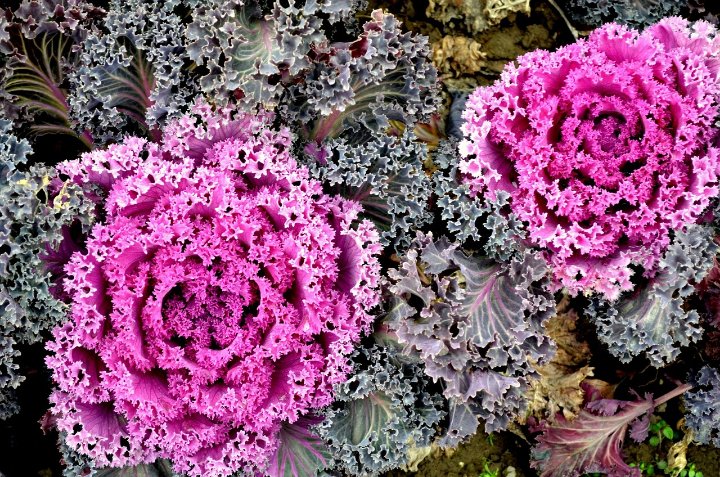
Flowering kale, a stunning ornamental plant, effortlessly combines functionality with beauty, making it an excellent choice for an autumn balcony garden. Unlike typical ornamental varieties, flowering kale is valued not only for its striking visual appeal—with frilly, colorful leaves in shades of purple, pink, and green—but also for its hardiness. It thrives in the cooler temperatures of fall, often growing best when exposed to frost, which enhances its color saturation and overall vibrancy.
When integrating flowering kale into container arrangements, consider using it as a focal point. Its unique rosettes, which resemble large cabbage heads, can create an interesting texture contrast alongside other flowers. Pairing flowering kale with vibrant daisies or cheerful pansies can provide a delightful juxtaposition, while the kale itself adds depth to your composition with its lush foliage.
Beyond its decorative qualities, flowering kale is also edible, making it a versatile addition to your balcony garden. While the flavor is milder compared to culinary kale, it can be harvested and used in salads or as a colorful garnish. For those looking to experiment with home gardening and culinary florals, flowering kale offers an excellent opportunity to merge aesthetics with function.
Black-Eyed Susan: Golden Hues for Autumn’s Glow
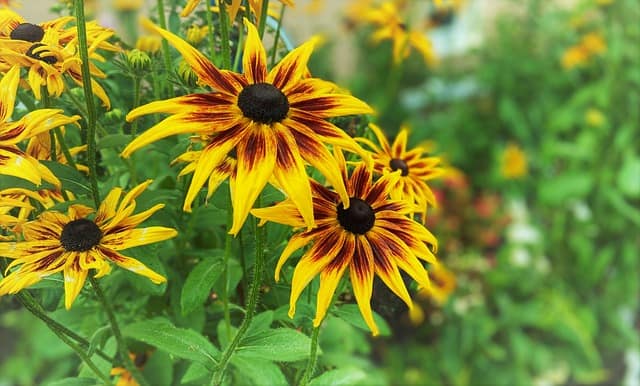
Black-eyed Susans are a show-stopping addition to any autumn balcony, embodying the warmth and vibrancy of fall with their bright yellow petals and characteristic dark centers. These perennials offer a long blooming period that typically extends into the autumn months, especially if planted in well-drained soil and full sunlight, making them perfect for creating a lively balcony garden when other flowers might be fading.
This hardy flower prefers a bit of neglect, making it a low-maintenance choice for busy balcony gardeners. Their tall, straight stems can reach heights of up to three feet, providing vertical interest to your arrangements. When planted in pots or raised beds, they can act as eye-catching focal points, particularly when combined with shorter flowers such as violas or sweet alyssum, which create a tiered effect.
A unique feature of black-eyed Susans is their resilience in attracting pollinators. Their bright blossoms serve as a beacon to bees and butterflies, which enhances biodiversity and makes your balcony a vibrant hub of activity. For an even more stunning effect, consider pairing these flowers with ornamental grasses, which can frame the Black-eyed Susans and add movement to your display.
Aster: A Burst of Color in the Autumn Garden
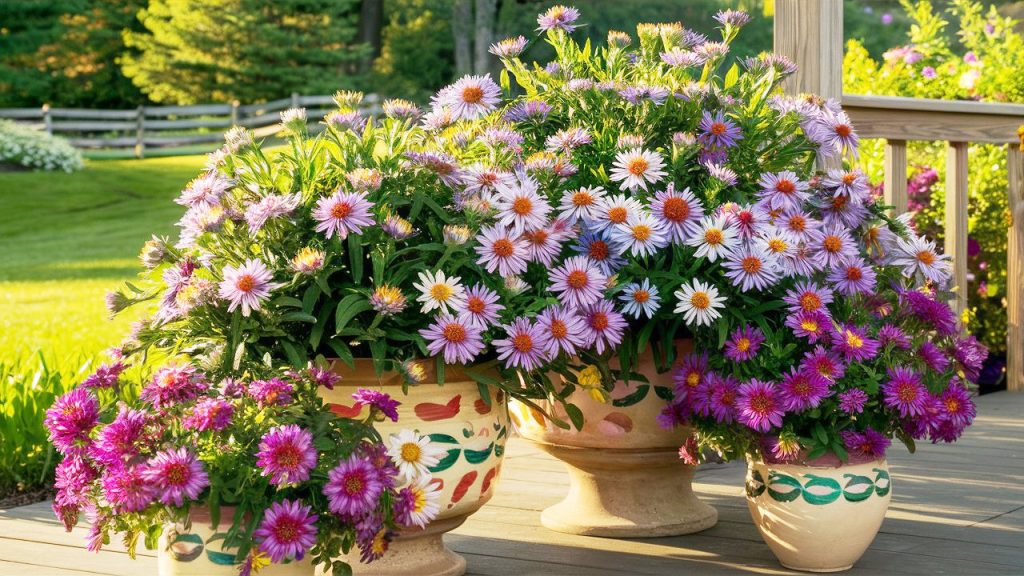
Asters, renowned for their late-blooming flowers, serve as a spectacular addition to autumn balcony gardens, extending the season’s floral display well into the cooler months. Known for their daisy-like blooms, asters come in a range of colors such as purple, pink, white, and blue, making them versatile enough to complement various garden themes. Their resilience in cooler temperatures makes them an ideal choice for balconies, where they can flourish even as the temperatures begin to dip.
When planting asters, it’s essential to consider their sunlight requirements. They thrive in full sun to partial shade, with at least six hours of sunlight ideal for robust growth and bloom production. Asters prefer well-draining soil that retains some moisture while avoiding waterlogging. Incorporating organic compost can significantly enhance soil health and nutrient availability, promoting healthy, vibrant flowers.
In terms of arrangement, asters can be particularly striking when planted alongside lower-growing flowers like violas or sweet alyssum. This not only creates a dynamic contrast in height but also fosters a rich tapestry of colors. Their late blooming period attracts pollinators like bees and butterflies, creating a lively aesthetic on your balcony while supporting local ecosystems. As a bonus, asters can also be cut and brought indoors, providing a touch of autumn beauty in your home.
Canna: Exotic Elegance for Vertical Interest

Canna lilies are the exotic giants of autumn balcony gardens, known for their tropical foliage and bold, colorful blooms. These plants add a dramatic vertical element to your space, with some varieties reaching heights of up to six feet. Cannas produce large, funnel-shaped flowers in fiery hues of red, orange, and yellow, making them eye-catching focal points that can transform any balcony into a vibrant oasis as the seasons change.
For best results, cannas should be planted in large pots filled with rich, well-draining soil. They prefer full sun and will thrive if given ample light throughout the day. Their preference for moist conditions means that regular watering is essential, especially in containers, which can dry out more quickly than garden beds. Adding mulch on top of the soil can help retain moisture while also providing a clean and tidy appearance.
In terms of companion planting, cannas work beautifully alongside lower-growing plants like sweet alyssum or colorful annuals like pansies, which soften the bases of their towering stalks. Additionally, they can create lovely contrasts with flowering kale, combining the visual impact of both foliage and flowers. Canna plants not only serve aesthetic purposes; they can also attract butterflies, contributing to the liveliness of your balcony.
Verbena: Continuous Blooms for Attracive Displays

Verbena is a fantastic option for gardeners looking to add long-lasting color to their autumn balcony spaces. These hardy perennials are known for their clusters of small, vibrant flowers, which bloom prolifically from summer through fall. Available in colors such as purple, pink, red, and white, verbena can brighten up any corner of your balcony, creating a cheerful ambiance as the seasons change.
Adaptable and resilient, verbena prefers full sun and will thrive in well-drained soil. They are low-maintenance, making them perfect for busy balconies. Regular deadheading will encourage continuous blooms, maximizing their floral display during autumn. What’s more, verbena can be grown in various arrangements, making them suitable for hanging baskets, window boxes, or traditional pots, allowing for creativity in your balcony design.
Complementing verbena with taller plants, such as asters and dahlias, can create a lush, layered look that enhances the beauty of your display. Additionally, their sweet fragrance is known to attract a variety of pollinators, including bees and butterflies, enhancing the ecological diversity of your balcony garden. With proper care, verbena can endure through light frosts, ensuring that your balcony remains a vibrant focal point right up to the first snowfall.
Sneezeweeds: A Splash of Color with a Unique Twist
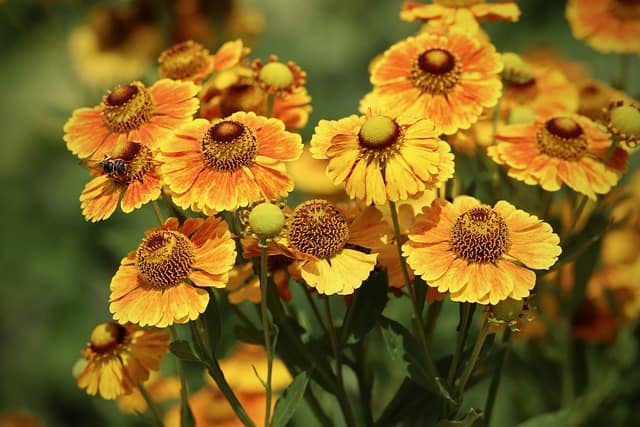
Sneezeweeds, known scientifically as Helenium, bring a vibrant burst of color to autumn balcony gardens with their characteristic warm yellow, orange, and red blooms. These cheerful flowers not only thrive in cooler weather but also provide an exceptional focal point as they flourish from late summer into fall. What sets sneezeweeds apart is their daisy-like flowers that can attract a variety of pollinators, creating an enticing atmosphere for bees and butterflies.
When cultivating sneezeweeds, it is essential to choose a container that provides ample drainage, as these plants prefer slightly moist, well-drained soil. Regular watering helps maintain their vibrant appearance, especially in pots that may dry out more quickly than garden beds. Sneezeweeds flourish in full sun but can tolerate partial shade, making them adaptable to various balcony exposures.
For an aesthetically pleasing arrangement, plant sneezeweeds alongside other fall favorites like verbenas or black-eyed Susans to create a dynamic array of colors and heights. Their bushy growth habit makes them effective as mid-level fillers that frame taller plants, creating depth and texture in your display. Additionally, the floral scent of sneezeweeds can add another sensory layer to your balcony experience, making it a delightful area to relax and enjoy the fresh autumn air.
Japanese Anemone: Graceful Blooms for Serene Spaces
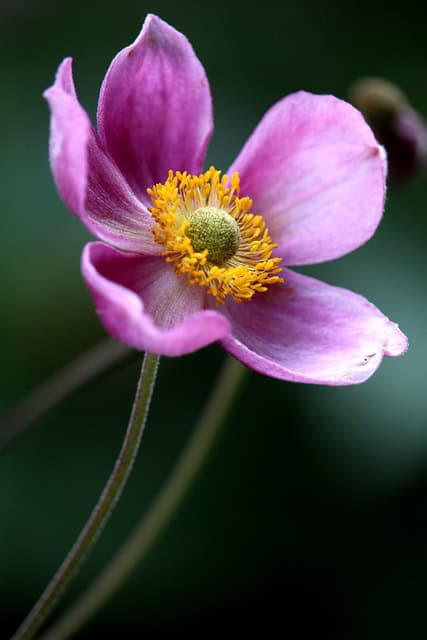
The Japanese anemone, known for its elegant elegance, adds a touch of grace to any autumn balcony with its delicate, cup-shaped flowers that bloom in stunning shades of white and pale pink. These perennials are excellent for container gardening, thriving in dappled sunlight and partial shade, making them perfect for balconies that may not receive all-day sun but still want to create a lovely floral display.
Japanese anemones are relatively low-maintenance. They prefer moisture-retentive, well-drained soil and will benefit from regular watering, particularly during dry spells. Their graceful, tall stems and airy foliage create a soft contrast to denser plants, making them an ideal choice to plant alongside more robust flowers like dahlias or flowering kale for a layered effect.
What makes Japanese anemones especially appealing is their late-season bloom time, often continuing to flourish even as cooler weather sets in. This means you can uphold a vibrant balcony garden well into autumn. Additionally, their gentle sway in the breeze adds a soothing quality to the space, promoting a serene environment for relaxation and contemplation. For an added touch of tranquil beauty, consider pairing them with ornamental grasses, which can further enhance the peaceful aesthetics of your autumn garden.
Autumn Crocus: The Timeless Charm of Fall Blooms

Autumn crocus, or Crocus nudiflorus, is a delightful gem that introduces a unique aspect to your autumn balcony garden. Unlike their spring-blooming cousins, these brilliant little bulbs bloom in the fall, bringing unexpected color and charm to the landscape just as many other flowers fade away. With their classic cup-shaped flowers in purples, whites, and yellows, they can create a striking contrast against the backdrop of fading leaves.
Planting autumn crocus is straightforward; they thrive in well-draining soil and prefer sunny locations. Ideal for pots, these bulbs can be planted in clusters for maximum impact, as their petite size creates an enchanting display when viewed up close. Timing your planting is essential—bulbs should be planted in late summer or early autumn, allowing them to establish roots before blooming, which typically occurs between September and October.
Their low height and delicate blooms make autumn crocus an ideal companion for taller plants like canna lilies and asters. This layering technique creates a rich visual landscape that enhances the overall beauty of your balcony. Additionally, autumn crocus has a natural appeal that attracts butterflies, making your garden not only beautiful but also a vital part of the local ecosystem.
Marigold: The Cheerful Autumn Classic
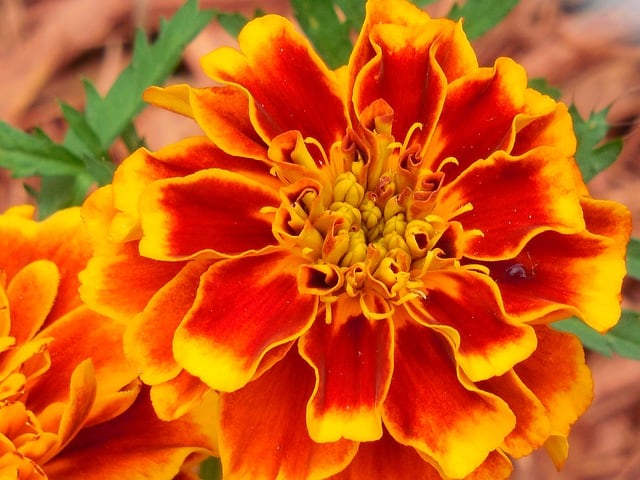
Marigolds, with their bright, sunny blooms, are a quintessential addition to any autumn balcony garden. Available in a variety of colors, including vibrant oranges, yellows, and deep reds, marigolds are celebrated not only for their vivid appearance but also for their resilience in the fall season. These flowers thrive in cooler temperatures and can often continue blooming right up until the first frost, making them an ideal choice for extending your balcony’s floral display into autumn.
Planting marigolds is remarkably straightforward, and their hardy nature means they require minimal care. They prefer full sunlight, so position them where they can soak up the sun for most of the day. Ensure the pots have excellent drainage to avoid waterlogging, as marigolds will thrive best in slightly dry conditions between waterings. Additionally, deadheading spent blooms encourages a longer flowering period, allowing your marigolds to stay vibrant for weeks.
Beyond their aesthetic appeal, marigolds are also known for their pest-repelling qualities. Their distinct scent has been reported to deter aphids and other garden pests, making them beneficial companions when planted alongside more delicate flowers. Combining marigolds with plants like asters or violas can create a cheerful, diverse arrangement that flourishes throughout the fall months, brightening up even the grayest days.
Million Bells: A Cascading Shower of Color
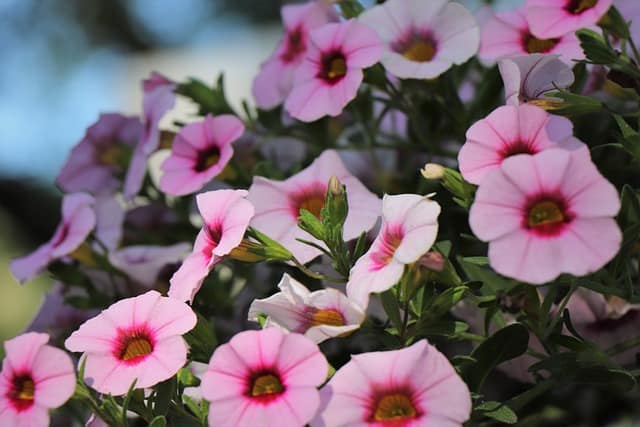
Million Bells, or Calibrachoa, provide a stunning, trailing addition to your autumn balcony, filling your space with a cascade of color. These charming flowers produce an abundance of small, trumpet-shaped blooms that resemble mini-petunias. Available in various vibrant hues—including pinks, purples, yellows, and blues—Million Bells create a delightful explosion of color that can brighten any setting as the weather cools.
Ideal for hanging baskets and window boxes, Million Bells thrive in full sun to partial shade, preferring well-draining soil that retains moisture without becoming soggy. Their semi-trailing habit allows them to spill over the edges of pots, creating a cascading effect that adds visual interest to your balcony garden. Regular deadheading is beneficial for maintaining their continuous blooming nature, ensuring that you enjoy vibrant displays throughout the autumn months.
These flowers also attract pollinators such as bees and butterflies, enhancing the ecological balance of your garden. When choosing companion plants, consider pairing Million Bells with lower-growing varieties like sweet alyssum or hardy pansies to create a lush and layered display. The combination of colors and textures can create a warm, inviting atmosphere that perfectly reflects the beauty of autumn.
Sweet Autumn Clematis: Fragrant Grace for Vertical Spaces
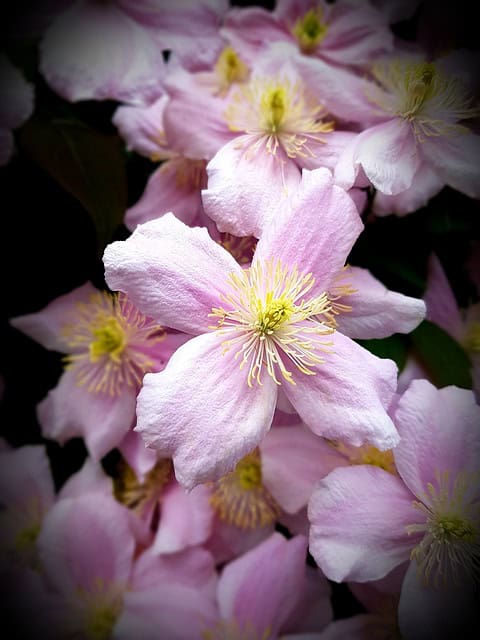
For those seeking vertical interest in their garden, Sweet Autumn Clematis (Clematis terniflora) offers not only a stunning visual but also intoxicating fragrance that encapsulates the spirit of autumn. This vigorous climber is renowned for its profusion of small, star-shaped white flowers that release a sweet scent during the evening hours. As the days get shorter, this clematis brings a touch of magic to your balcony, creating an enchanting atmosphere.
Sweet Autumn Clematis prefers a sunny spot with some afternoon shade, thriving in well-draining soil. It requires sturdy support—such as trellises, railings, or obelisks—where its long vines can climb and cascade beautifully. Regular pruning after flowering is essential to maintain its form and encourage healthy growth for the following year, ensuring your balcony remains lush and vibrant season after season.
The blooms of Sweet Autumn Clematis can create a stunning backdrop or contrasting visual when planted alongside autumn-hued flowers like marigolds and asters. Their blooms can soften the vertical lines of your balcony while their fragrance attracts nighttime pollinators, such as moths, enhancing the ecological diversity of your space. Not only does this climber beautify your balcony, but it also creates a soothing, aromatic environment—perfect for enjoying quiet evenings outdoors as the crisp autumn air settles in.
Hibiscus: Tropical Elegance in Autumn

Hibiscus flowers are often associated with warm, tropical climates, but certain varieties can thrive in cooler conditions, making them a striking addition to your autumn balcony garden. Known for their large, eye-catching blooms, hibiscus plants can produce flowers in shades of red, pink, yellow, and white, offering a dazzling display that draws attention and admiration. These beautiful blooms continue to unfold throughout the early fall months, infusing your space with vibrant color when many other plants begin to fade.
When choosing hibiscus for your balcony, it’s best to opt for hardy varieties such as the Rose of Sharon (Hibiscus syriacus), which is resilient to cooler temperatures. Hibiscus thrives in full sunlight, requiring at least six to eight hours of direct light each day. When planting in containers, use nutrient-rich, well-draining soil, and provide regular watering, as hibiscus prefers consistently moist conditions but can suffer from root rot if overwatered.
For a stunning presentation, consider placing hibiscus in prominent locations on your balcony, perhaps paired with trailing plants like Million Bells or Zhizinias for a striking contrast. Additionally, hibiscus can act as a natural screen or privacy barrier when planted in larger pots, thus creating a cozy nook for outdoor enjoyment. With their tropical flair and dynamic colors, hibiscus flowers can transport you to warmer climates even as autumn unfolds.
Shrub Rose: Timeless Beauty with Continuous Blooms
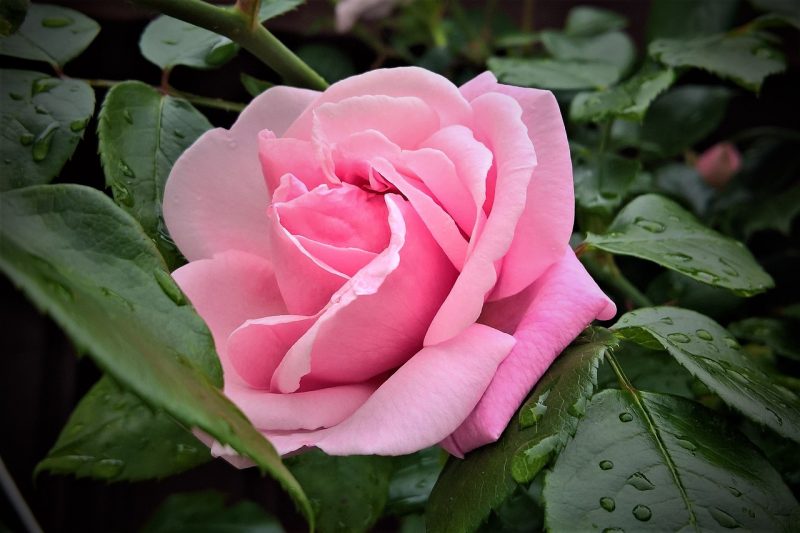
Shrub roses are a staple in many gardens, and they can be just as impressive on balconies during the autumn months. These versatile plants are renowned for their hardy nature and the wide variety of colors and fragrances they offer. Selecting varieties that bloom repeatedly will ensure that your balcony remains adorned with flowers through the season. The classic elegance of shrub roses adds a touch of romance and charm to any outdoor space, making them a perfect choice for creating a serene retreat.
Shrub roses thrive in full sun and prefer well-draining soil enriched with organic matter. Regular pruning—particularly in late winter—helps maintain their shape and encourages healthy growth. Throughout autumn, it’s important to keep a consistent watering schedule, ensuring the plants get enough moisture without becoming waterlogged. Adding mulch around the base of the plants can help retain moisture and suppress weeds.
In terms of arrangement, group shrub roses together in decorative pots to create a focal point or intersperse them with lower-growing flowers like pansies or asters to add depth and interest. Their vibrant blooms provide contrasts to the golden hues of autumn foliage, creating a stunning visual display. Additionally, the fragrance of shrub roses can enhance the ambiance of your balcony, attracting birds and beneficial insects, and enriching your outdoor experience.
Hardy Fuchsia: Unique Color and Form

Hardy fuchsia, with its enchanting, drooping blossoms and lush green foliage, can provide a unique and whimsical touch to your autumn balcony garden. Known for their vibrant colors—often combining purple, pink, red, and white—hardy fuchsia plants produce lovely, tubular flowers that create a mesmerizing cascade of color. Their blooming period extends into the fall, providing mid- to late-season interest and vibrancy.
These plants thrive in partial shade, making them a great option for balconies with limited sunlight. Hardy fuchsias prefer moist, well-draining soil and benefit from regular watering, particularly during dry spells. To ensure optimal blooming, using a balanced fertilizer during the growing season can promote vigorous growth and abundant flowers.
For a charming display, plant hardy fuchsias in hanging baskets or tall planters, where their trailing vines can spill over the edges. Pairing them with upright plants like asters or even dwarf conifers can create a visually stunning, multi-dimensional arrangement. Not only do hardy fuchsias serve as an artistic element in your garden, but they also attract hummingbirds and other pollinators, adding life and movement to your balcony space.
Gomphrena: Vibrant Ball Flowers for Lasting Color
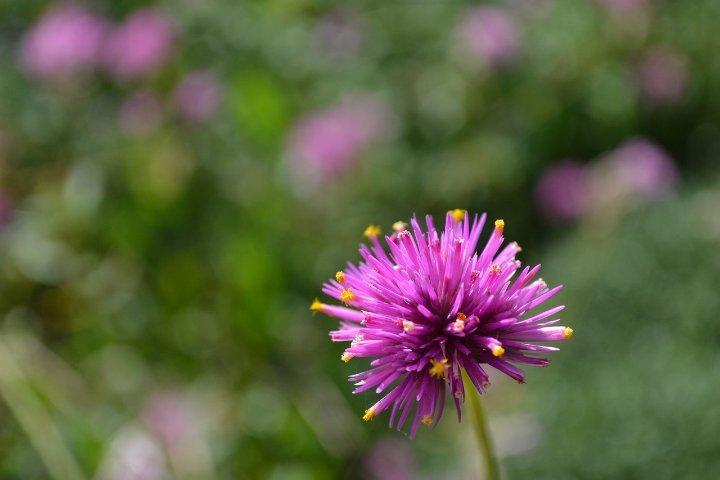
Known for their round, pom-pom-like flowers, gomphrena is a stellar option for adding a splash of long-lasting color to your autumn balcony. These hardy annuals bloom prolifically in shades of magenta, purple, and white, showcasing an unusual and cheerful appearance that instantly brightens up any space. Gomphrena is highly adaptable, making it an excellent choice for container gardening, and is particularly valued for its drought resistance, thriving even as temperatures begin to decrease.
When planting gomphrena, choose a sunny spot since these flowers prefer full sunlight to thrive. They are best suited to well-draining soil enriched with organic matter, allowing them to grow robustly while achieving their vibrant color. Regular deadheading—removing spent flowers—will encourage further blooming, ensuring that your balcony remains vibrant through autumn. Gomphrena flowers also have a delightful resilience to adverse weather, maintaining their color even in windy or cooler conditions.
To enhance your balcony display, consider planting gomphrena alongside other late-bloomers like zinnias or celosia. Their spherical flowers not only create an exciting contrast in bloom shape but also bring a sense of playfulness to your arrangement. Additionally, gomphrena’s bright colors attract beneficial insects like butterflies and bees, enriching the biodiversity of your balcony ecosystem.
Perennial Sage: Fragrance and Versatility
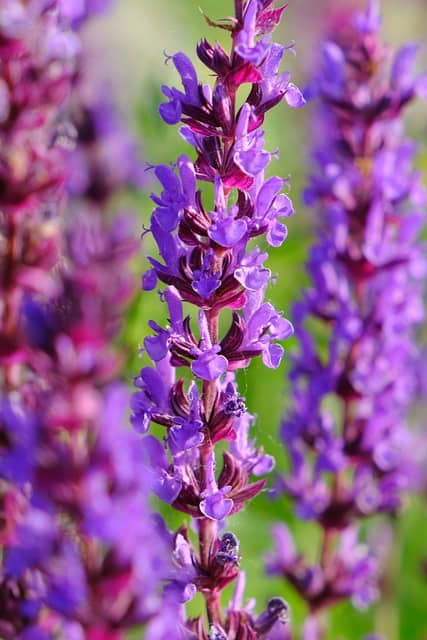
Perennial sage (Salvia officinalis) is an aromatic herb that brings not just a beautiful display of color but also practical benefits to an autumn balcony garden. With its soft, silvery-green leaves and spikes of purple blue flowers, sage adds visual interest as well as a delightful herbal fragrance that invigorates the outdoor space. Flowering typically occurs in late summer to early fall, making it a splendid choice for extending your garden’s beauty into autumn.
Sage is incredibly low-maintenance and thrives in well-drained soil with access to full sun. It prefers slightly dry conditions, which means you won’t need to fuss over watering too much. In fact, sage can even thrive in poorer soil, making it a practical and resilient choice for pot cultivation. The addition of perennial sage can also serve as a culinary resource, as the leaves can be harvested for cooking, giving your balcony garden functionality as well as beauty.
In terms of pairing with other plants, the soft tones of sage foliage make it an excellent companion for vibrant blooms like dahlias or goldenrod. The contrast of textures and colors will not only enhance your balcony’s visual allure but also create a fragrant oasis that delights the senses. Be sure to leave some flowers for pollinators; the blossoms of perennial sage attract bees and butterflies, contributing to a thriving, dynamic garden environment.
Turtlehead: A Unique Touch of Charm
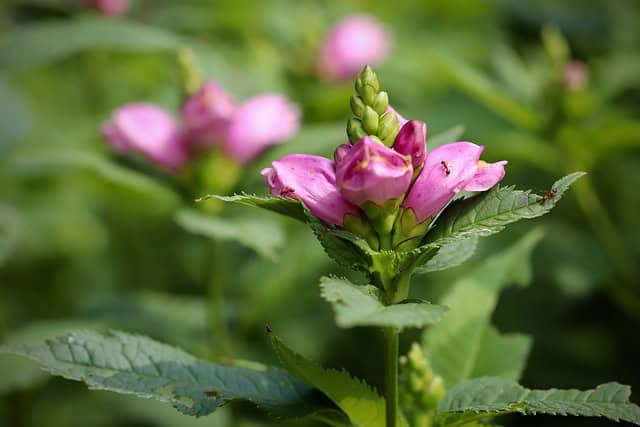
Turtlehead (Chelone glabra) is an exceptional choice for incorporating into your autumn balcony garden, known for its distinctive flowers that resemble the head of a turtle. This perennial plant produces tubular blossoms in delicate shades of white and pink from late summer into fall, providing a captivating display as the seasons transition. Its unique shape and coloration add interest to your balcony while offering a charming point of conversation for visitors.
Turtlehead thrives in moist, well-drained soil, preferring partially shaded spots, which makes it a suitable option for balconies that receive only dappled sunlight. When planting it in containers, consider using a mix that retains some moisture without becoming waterlogged. With its leafy backdrop and low maintenance needs, turtlehead can flourish in cooler weather, making it an ideal candidate for autumn displays.
To enhance your turtlehead’s appeal, consider pairing it with other shade-loving plants such as ferns or hostas, creating a lush, verdant environment. The contrast of textures from the broad leaves of the turtlehead and the delicate petals of companion plants provides a beautiful interplay of forms. Additionally, turtlehead attracts pollinators, including bees and butterflies, enriching your balcony garden with life and movement even as the temperatures begin to drop.
Autumn Monkshood: A Touch of Elegance
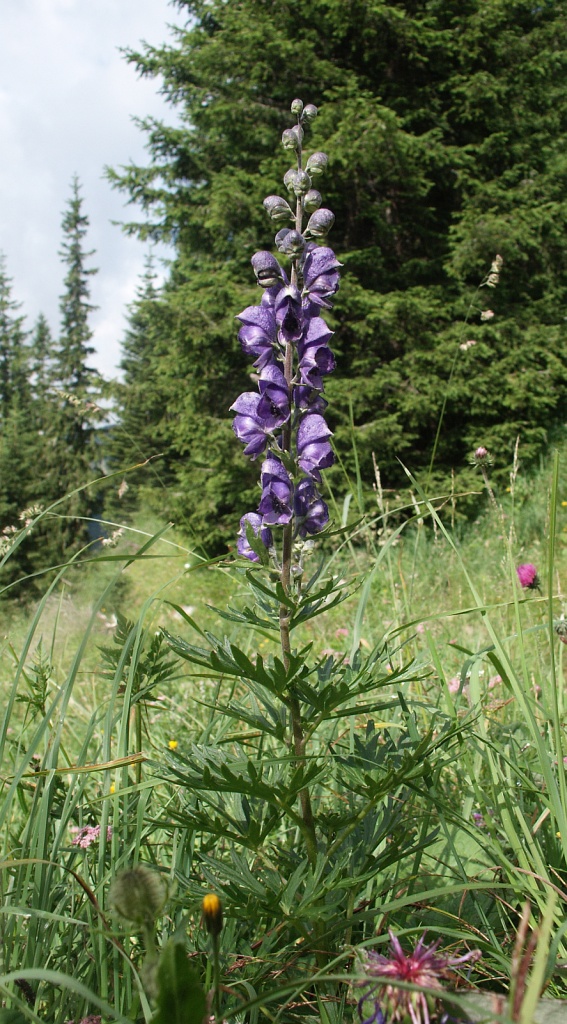
Autumn monkshood (Aconitum autumnale), with its striking dark blue to purple blooms, injects an air of elegance and drama into your autumn balcony garden. Known for its tall spikes, the flower resembles a hood—a feature that contributes to its name. The blossoms typically appear in late summer to early fall, maintaining their beauty until the frost arrives, making this plant a lovely way to extend the floral display into the cooler months.
This perennial prefers partial shade to full sun, adapting well to various light conditions, though it flourishes best in cooler climates. Monkshood thrives in moist, rich soil, so be sure to choose containers with good drainage and regularly water them to maintain moisture levels. However, be cautious as all parts of the plant are toxic if ingested; therefore, it’s best suited for balconies that are not frequented by curious pets or children.
For an enchanting autumn arrangement, combine monkshood with low-growing companions like autumn daisies or ornamental grasses. The vertical spikes of monkshood can create height and structure in your balcony garden while the rounded blooms of the lower plants provide fullness. This combination not only showcases a spectrum of colors but also attracts pollinators that are seeking late-season nectar, adding to the garden’s vibrancy and ecological value.
Heather: A Carpet of Color
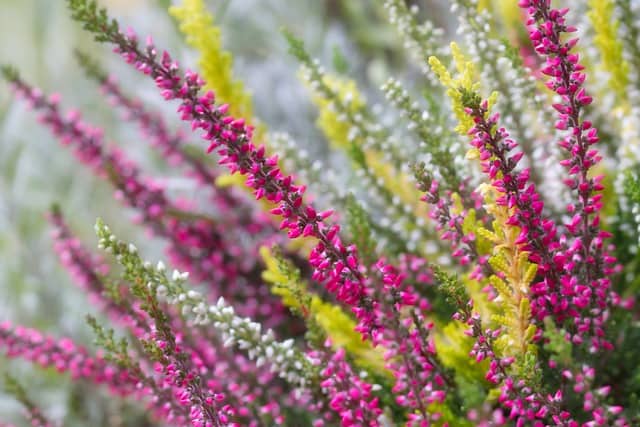
Adding heather (Calluna vulgaris) to your autumn balcony can create a beautiful carpet of color that infuses your outdoor space with life. Known for its long-lasting blooms that can appear in shades of purple, pink, and white, heather becomes a vibrant feature as other flowers begin to fade. This hardy plant is ideally suited for cooler climates, as it thrives in the fall, making it an excellent selection for autumn displays.
Heather prefers well-draining, acidic soil and does best in full sun to partial shade. It’s also drought-tolerant once established, making it a practical option for busy balcony gardeners who may not be able to water frequently. When planting, consider using a mix of heather varieties to create rich layers of color and texture. This strategy enhances visual appeal and extends the blooming period through the fall months.
To further accentuate your heather display, mix it with ornamental grasses or trailing plants such as ivy, which can soften the edges of your arrangement. The low-growing nature of heather allows taller plants, like autumn monkshood, to rise above, offering a lush backdrop to showcase the blooms. Additionally, heather attracts beneficial pollinators, enriching your balcony garden’s biodiversity while providing a captivating visual feast for the eyes.




